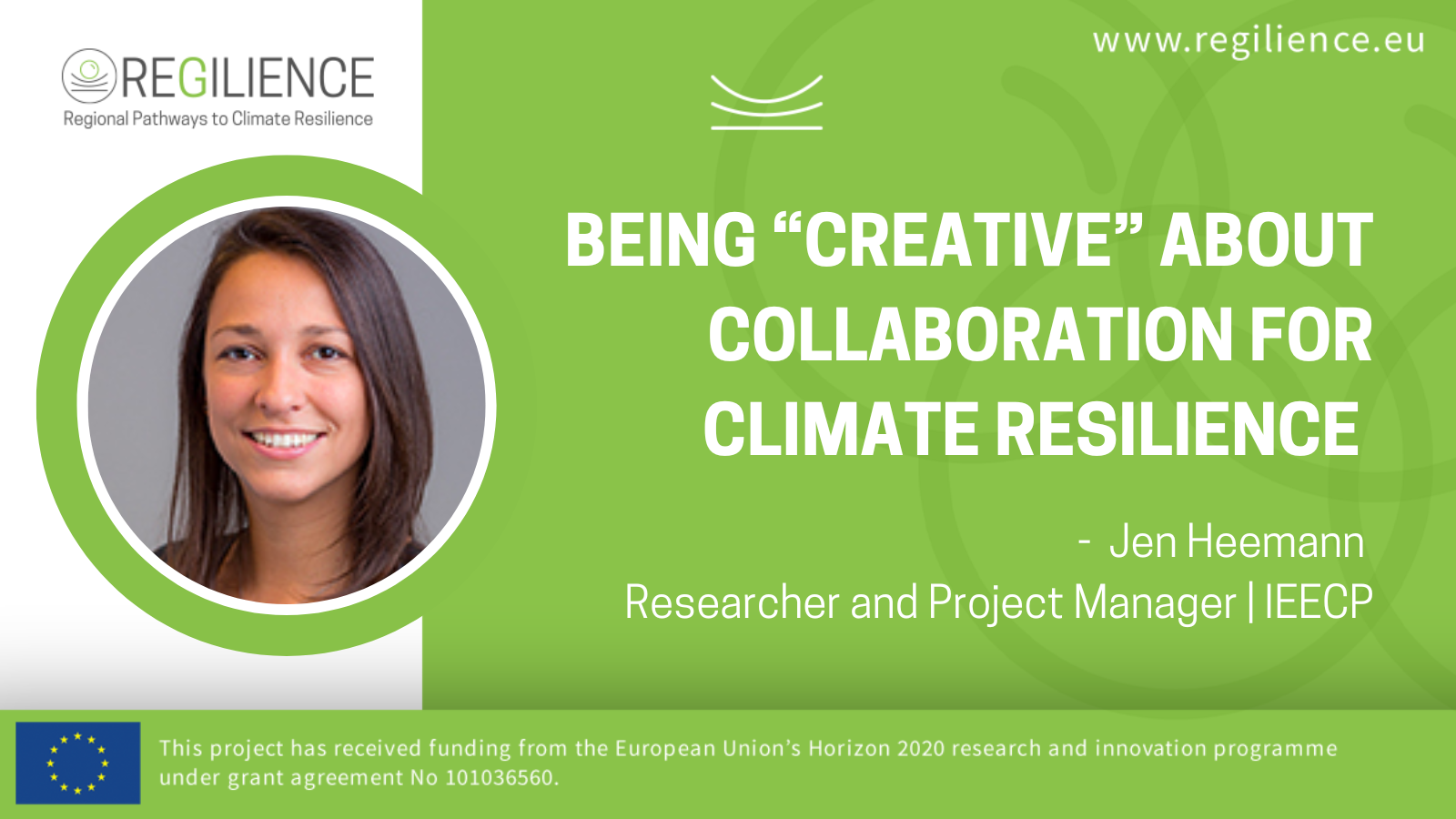
You probably experienced or heard about the persistent heatwaves that affected Europe this summer, causing wildfires and droughts, impacting people’s health and the production of food, and influencing energy demand and production, to name a few. This is an example of how natural, social, and economic systems are interconnected and interdependent. And as climate change affects multiple sectors and systems, it leads to a sequence of unforeseen and unpredictable events that impact other systems (cascade effect).
Why do we need to collaborate?
Ideas and solutions to build climate resilience must consider the interconnectedness of the systems. This is only possible by thinking “outside the box” of a certain scientific field or sector, and by involving the ones who know best how climate change impacts the region or territory: its local actors. The time asks for strengthening collaboration among people with diverse knowledge and experience.
“The sheer complexity and specialisation of science today means that attitudes of openness and collaboration are not a nice complement, but rather a critical factor for success.”
Mariana Mazzucato
In her mission-oriented strategy for the European Union, Mariana Mazzucato highlights the importance of developing new forms of collaboration among actors from varied disciplines, sectors, and backgrounds. This is not an easy task, as it entails openness and cooperation among people with diverse interests and perspectives. Therefore, it is crucial to understand how such processes can become spaces that allow the integration of different forms of knowledge while exploring commonalities and complementarities. The concept of creativity may be helpful in designing such group dynamics.
What is creativity?
Recently, creativity has been linked to complex thinking, in which creativity is related to human interactions and work processes that lead to the creation of something (such as a policy, a strategy, knowledge, etc.). Authors such as Montuori (2017) and Runco (2007) argue that, rather than an isolated phenomenon, creativity is understood as a networked, collaborative, “bottom-up” process arising out of interactions of a given system.
In Nature of Creativity, Montuori describes the environments that support creativity, which are often not authoritarian, promoting the independence of judgment, problem-finding, and flatter organisational structures.
Furthermore, the processes that encourage creativity involve the following attributes:
- Creative tensions: such as between specialisation and a broad outlook, autonomy and the need for respect and approval, certainty and uncertainty.
- Not stressing over specialisation: allowing the freedom to tap into several disciplines and knowledge bases.
- No one’s view is ignored: the actors should feel and know that their views will not be ignored and be given a serious hearing.
- Isolation and interaction: the process should permit and encourage the participants to experience both moments of isolation (reflection) and interaction with others.
- Matching peoples’ interests and skills with the right assignments: which is only possible when there is good knowledge about the actors involved and the nature of the assignment. Challenging tasks: such tasks elicit intrinsic motivation (see below) and creative thinking. On the other hand, too much challenge can result in high levels of anxiety, inhibiting the capacity for creative thought.
- Heuristic tasks: with clear expectations and considerable autonomy. On the other hand, tasks that involve specific or pre-established steps, with one right way and one right answer, tend to constrain creativity.
From the participants’ side, it seems essential that they have both intrinsic motivation for the subject (such as fascination, enjoyment while performing the task, or feeling of accomplishment) and extrinsic motivation (such as financial incentives and social approval).
If you’re interested in methods and tools used for stakeholder engagement and co- creation processes, REGILIENCE and the projects TransformAr, IMPETUS, and ARSINOE will use varied ways of involving stakeholders. Stay tuned to discover more about such processes through the materials that will be launched in the coming year, such as TransformAr’s playbook for participatory workshops and REGILIENCE’s stakeholder engagement strategy.
You can download the article here.